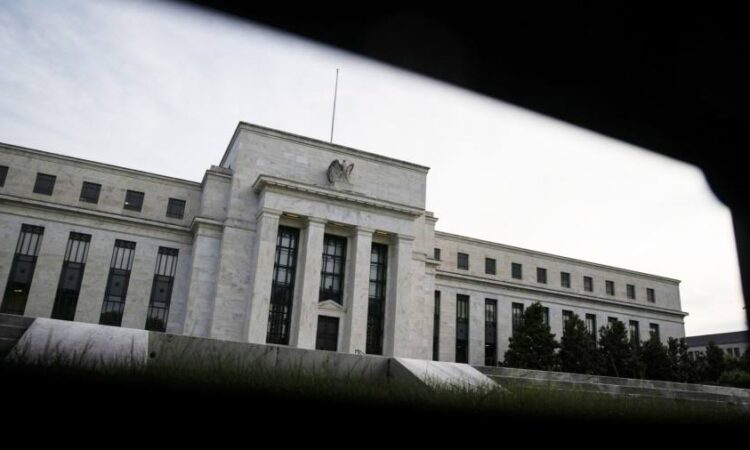
Wall Street stocks zigzagged on Friday as investors scrutinised a fresh round of economic data for clues on how far the US Federal Reserve will go in its fight to slow inflation.
The benchmark S&P 500 added 0.3 per cent, erasing earlier losses, and the tech-heavy Nasdaq Composite declined 0.1 per cent in afternoon dealings on Friday. Trading volumes are expected to be thin at the height of the festive season.
Friday’s moves came near the end of a grim year for markets, with the S&P 500 and the Nasdaq Composite having tumbled 20 per cent and 33 per cent respectively in 2022. The FTSE All World share index has shed about a fifth of its value this year, while Bloomberg’s broad aggregate index of the global bond market is off about 16 per cent.
“The past two weeks have been a weak gruel of fatalism mostly and halfhearted optimism,” said Mike Zigmont, head of trading and research at Harvest Volatility Management. “It’s a weird psychological condition and it strikes me that the market [and] investors need a rest.”
Investors on Friday paid close attention to the Fed’s preferred inflation gauge. The US core personal consumption expenditure price index — which excludes food and energy prices — rose 0.2 per cent month on month in November, matching a forecast by economists polled by Reuters, while the main PCE index rose 0.1 per cent.
The annual rate of growth for the core measure cooled to 4.7 per cent in November from 5 per cent the previous month.
The report from the commerce department also pointed to a slowing in rate of growth in personal income and spending in the world’s biggest economy. Separate data from the commerce department showed orders for long-lasting US goods fell 2.1 per cent in November from the month prior, much bigger than the 0.6 per cent decline expected by economists. The reports provided “further evidence that the [US] economy has lost momentum”, said Andrew Hunter, US economist at Capital Economics.
Signs that inflation may have peaked allowed the Fed to raise borrowing costs by half a percentage point in December, ending a run of four consecutive 0.75 percentage point moves. However, the central bank signalled its intent to raise rates just above 5 per cent next year, up from the current target range of 4.25 per cent to 4.5 per cent, with no rate cuts until 2024.
The Fed’s hawkish stance was reinforced on Thursday when third-quarter gross domestic product growth was revised to a 3.2 per cent annualised rate, up from 2.9 per cent in November. Lower than expected initial jobless claims and chipmaker Micron Technology’s announcement of jobs cuts further soured investor sentiment.
Expectations of tight monetary policy next year dented prices for US government debt this year, sending yields rising. On Friday, the two-year Treasury yield rose 0.06 percentage points at 4.33 per cent and the 10-year US Treasury yield climbed 0.07 percentage points at 3.74 per cent.
A measure of the dollar’s strength against a basket of six other international currencies fell 0.1 per cent on the day, leaving it down 9 per cent this year.
Oil prices ticked higher, with international benchmark Brent crude up 3.4 per cent at $83.70 a barrel.
Elsewhere in equity markets, Hong Kong’s Hang Seng index fell 0.4 per cent, China’s CSI 300 dropped 0.2 per cent, South Korea’s Kospi slid 1.8 per cent and Japan’s Topix lost 0.5 per cent.
The regional Stoxx Europe 600 was flat and London’s FTSE 100 ended a half-day UK trading session marginally higher.



